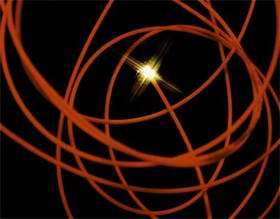Dark Fiber Technology Creates Faster Networking

The quality of real-time video events such as interactive music master classes will improve at Columbia University as a result of a new, high-speed network known as the New York City Dark Fiber Network. This is just one example of the benefits of the private network for Columbia and other New York City research, education and medical institutions, which now have state-of-the-art links to each other and to the Internet and Internet 2.
In addition to creating faster and more reliable connections, the Dark Fiber Network boosts the cost effectiveness and flexibility of the institutions' computer networks. At Columbia, the new technology essentially doubles the capacity of its commercial Internet service from 155 Mbps (megabits per second) to 300 Mbps; enhances its flexibility in future purchasing of networking technology; and affords greater security of network connections in the event of damage to critical infrastructure. The network is called "dark fiber" because no telecommunications carrier is "lighting" it with its equipment; instead; Columbia "lights" its fiber strands with its own equipment, just as it does for on- and near-campus fiber cables.
The network was built during the past two years by a consortium of area institutions, all New York City-based members of NYSERNet, the New York State Education and Research Network. Columbia and New York Presbyterian Hospital took a prominent role in the project. Other founding members include the American Museum of Natural History, the City University of New York, Mt. Sinai-NYU Medical Center and Weill Cornell Medical College . Additional institutions are expected to join to take advantage of the superior service, and the project has extended into the Bronx. Similar services may eventually include other boroughs and Long Island.
The network already has benefited Columbia by connecting the Columbia University Medical Center (CUMC) in Washington Heights and several CUMC and New York Presbyterian Hospital locations throughout Manhattan to each other and the other participating institutions, as well as to the Internet.
In addition, unlike telecommunications carrier services, which have costs that vary by speed, the price of the fiber is fixed while its capability is virtually unlimited. "Owning the fiber strands will allow us to choose and afford new network technologies as they develop, rather than wait for, and then pay someone else for better networks," said Alan Crosswell, director of Columbia's Network and Computing Systems, adding that the new network allows the University to have the flexibility to implement "future fiber-based technologies that have not yet been developed."
Vace Kundakci, deputy vice president of Academic Information Systems for Columbia University, echoed those sentiments. "Lighting the fiber is the end of a long cooperative effort that will give the participating institutions a technological foundation that will serve them well into the century," he said.
Source: Columbia University
















